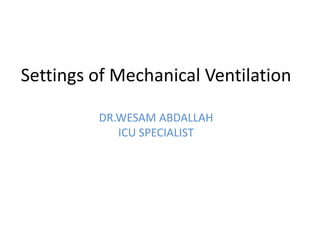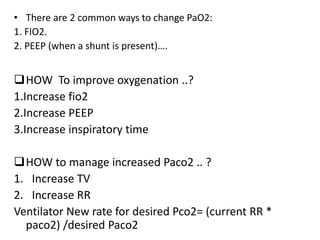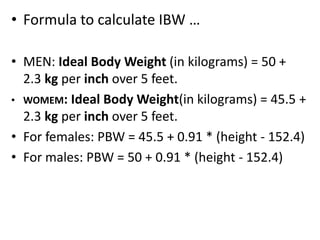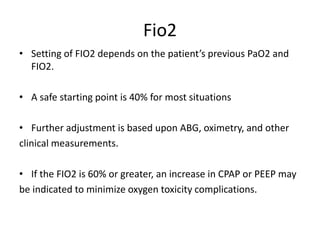This document provides information on settings for mechanical ventilation. It discusses how to improve oxygenation by increasing FIO2, PEEP, and inspiratory time. It also discusses how to manage increased Paco2 by increasing tidal volume and respiratory rate. It then covers the different settings used in volume control and pressure control modes of ventilation. It provides recommendations for tidal volume based on patient condition and formulas for calculating ideal body weight. Other settings discussed include frequency, FIO2, inspiratory flow rate, PEEP, inspiratory time, and inspiratory-to-expiratory ratio. Precautions for different settings are also outlined.


















